Tales of Arise deviates little from previous Tales games, and that’s fine
When Tales of Arise was initially revealed back in 2019, there was some noticeable pushback from certain long-time Tales fans. Despite not showing much gameplay in the initial Trailer, said fans seemed to think that Arise was straying too far from previous entries, possibly in an attempt to “westernise” this latest entry. It probably didn’t help that news on the title was rather thin until recently, with producer Yusuke Tomizawa mentioning that the game would be something of a reboot for the series as a whole.
However, the final product — while having some obvious changes — is still a very familiar experience that doesn’t actually deviate too much from what you’d expect from Tales games. Sure, there are new and reworked aspects, and the visuals are a big step up technically from Tales of Berseria. But at its core, Tales of Arise absolutely deserves the Tales name, delivering a fast-paced adventure with another memorable cast of characters.
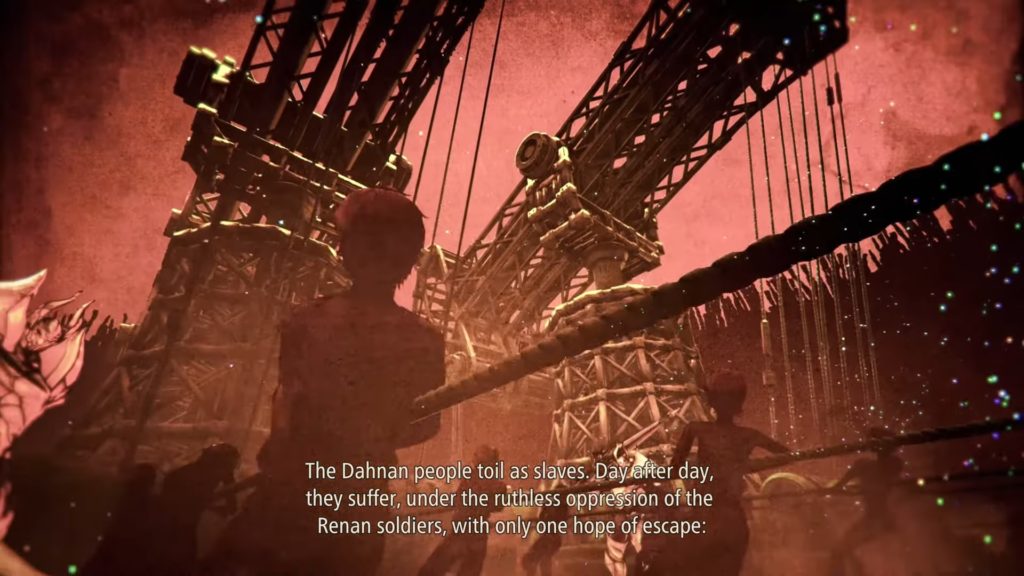
Tales of Arise opens with amnesiac protagonist Alphen, a young man missing not only his memories, but the ability to feel pain as well. The combination of his unknown past and strange appearance — he’s stuck wearing an iron mask of unknown origin — makes him well known amongst his fellow slaves, who toil away in the blazing heat of Calaglia for their Renan masters. Calaglia is but one region of Dahna, a planet currently enslaved by the people of Rena.
Alphen’s years of survival take a sudden turn when he runs into Shionne, a rifle wielding Renan on the run from her own kind. Like Alphen, she also has her own mysterious quirk — anyone that tries to touch her will be harmed by magic in the shape of thorns. The duo ends up working together after Alphen manages to draw the powerful Blazing Sword from Shion’s body, immune to the searing pain that it would inflict on any other wielder. As they journey through Dahna on a quest to defeat the Lords enslaving the planet, more allies and enemies are encountered, eventually leading to the truth behind Alphen’s lost memories and the nature of these twin worlds.
Slavery and oppression is a big focus in Tales of Arise, as the party sees how different people are persecuted for things out of their control during their journeys. Each of the game’s six party members has seen what hundreds of years of cruelty can do, and it leads to their quest feeling more personal as a result. However, the story never goes in a completely dark direction despite the initial premise — there are grim moments, and death is a frequent occurrence, but Arise generally tries to keep things hopeful.
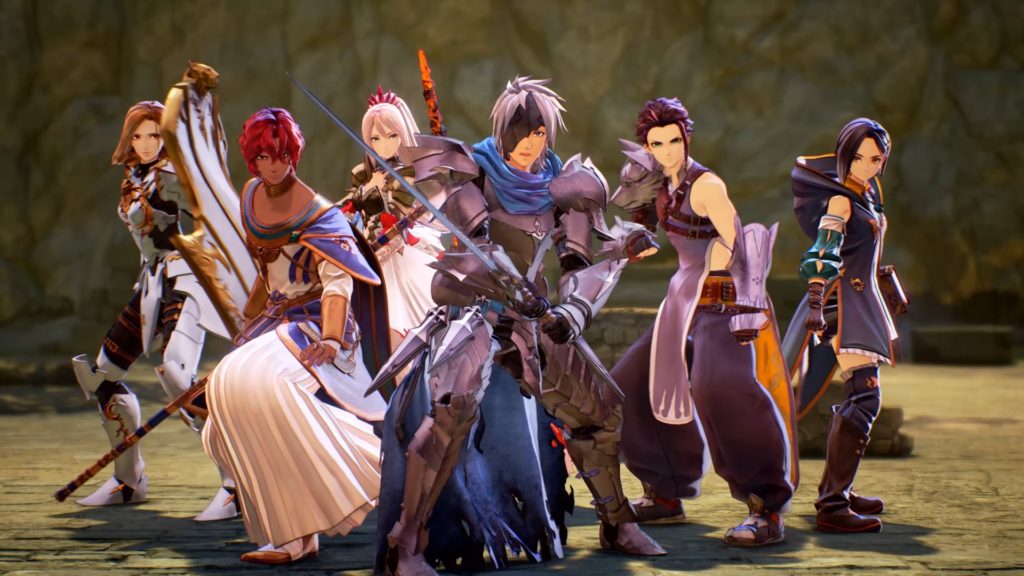
The skits that Tales games are known for do a lot to help with this. These break up main story events with short events been characters. They’ve always been a highlight for the series, and that’s still the case here. Unlike the 2D skits of earlier games, Tales of Arise has switched to using character models in comic book-style scenes instead — for those that have played Scarlet Nexus, it’s somewhat similar to that style of cutscenes. There are hundreds of skits, and they do a great job at fleshing the cast out, offering extra context for certain things, or even just lightening the mood every now and then.
On the whole, I’d say Tales of Arise’s messages on unification and trust come across clearly, though the story isn’t quite perfect. It moves relatively quickly most of the time, even with the aforementioned skits breaking things up. This is great for keeping the plot going and introducing new challenges for the cast to face, but at times it almost feels too fast. Each area of Dahna is set up to have its own set of issues, either due to its Renan overlords or otherwise. The problem is that everything can feel like it ends up being resolved a bit too quickly, making the whole conflict seem a little less serious than it perhaps should be.
The occasional pacing problems also extend to the last part of the game. Rushed endings aren’t something new to the Tales series, and Arise is unfortunately another victim of this. It’s not… bad per se, just a little underwhelming after the 40+ hours leading to its final moments. The journey there is at least enjoyable despite this, and weaker endings haven’t exactly stopped games like Tales of Vesperia from being loved by fans.
As a side note, I played the entirety of Tales of Arise’s main story with English voiceovers. The dub is generally good, especially Alphen and Shionne, but has some weaker voice acting here and there. It also suffers from the occasional lack of direction, with lines being delivered in an odd way every now and then. Based on my limited time trying out the Japanese dub, you should have a perfectly fine experience either way — though I’d imaging most people have already decided which they’ll pick without my input.

The Tales series has always put just as much emphasis on its gameplay as it does on its story, and this is where most of the changes have been made in Tales of Arise. Unlike what some expected from the initial reveal, this is not an open world game. Areas are relatively small (compared to RPGs like Xenoblade Chronicles anyway) and, as with Tales of Berseria, there’s no world map. Getting around Dahna is easy, thanks to sprinting with no stamina getting in the way, and the option to jump off ledges or swim through rivers. This makes certain areas feel larger than they actually are, as you’re given a variety of ways to explore them.
Chests and cooking ingredients are liberally spread throughout the game, rewarding thorough searching without being overly hard to find. It’s also possible to find owls hidden away, even in towns, who will reward you with cosmetic items to customise your party — I left Dohalim will a pair of stylish shades during my playthrough.
Camping also plays a part in your adventures, being the main place you’ll cook, spend one-on-one time with the main cast, and unlock even more skits. The camping system fits well into the gang’s journey to liberate Dahna, as they travel from region to region. I just wish that it wasn’t paired with a pointless menu option to view available DLC for the game — it’s jarring to have a banner stating that there’s new DLC when the characters are supposed to just be relaxing by the campfire.

One other gameplay system that deserves a mention is the Titles mechanic, another staple of the Tales franchise. In Tales of Arise, these serve as a way to unlock artes, passive buffs and stat increases. By doing a variety of activities, such as cooking or fishing (a simple but fun distraction from the main story), you’ll unlock titles. Each one has five nodes that can be unlocked by spending SP, gained through both battles and sidequests, and each offers a bonus for fully unlocking everything tied to it. This system is a great incentive to seek out new parts of the game, increasing your abilities in battle outside of just levelling up.
On the whole, I’d say exploration is an improvement in most areas. Towns are fairly bare-bones, but everything else improves upon the flat and uninspired area designs of earlier Tales games. Other than the towns, the only other gripe I have regarding non-combat gameplay is the dungeons. None of them have any interesting gimmicks, with barely anything resembling a puzzle.
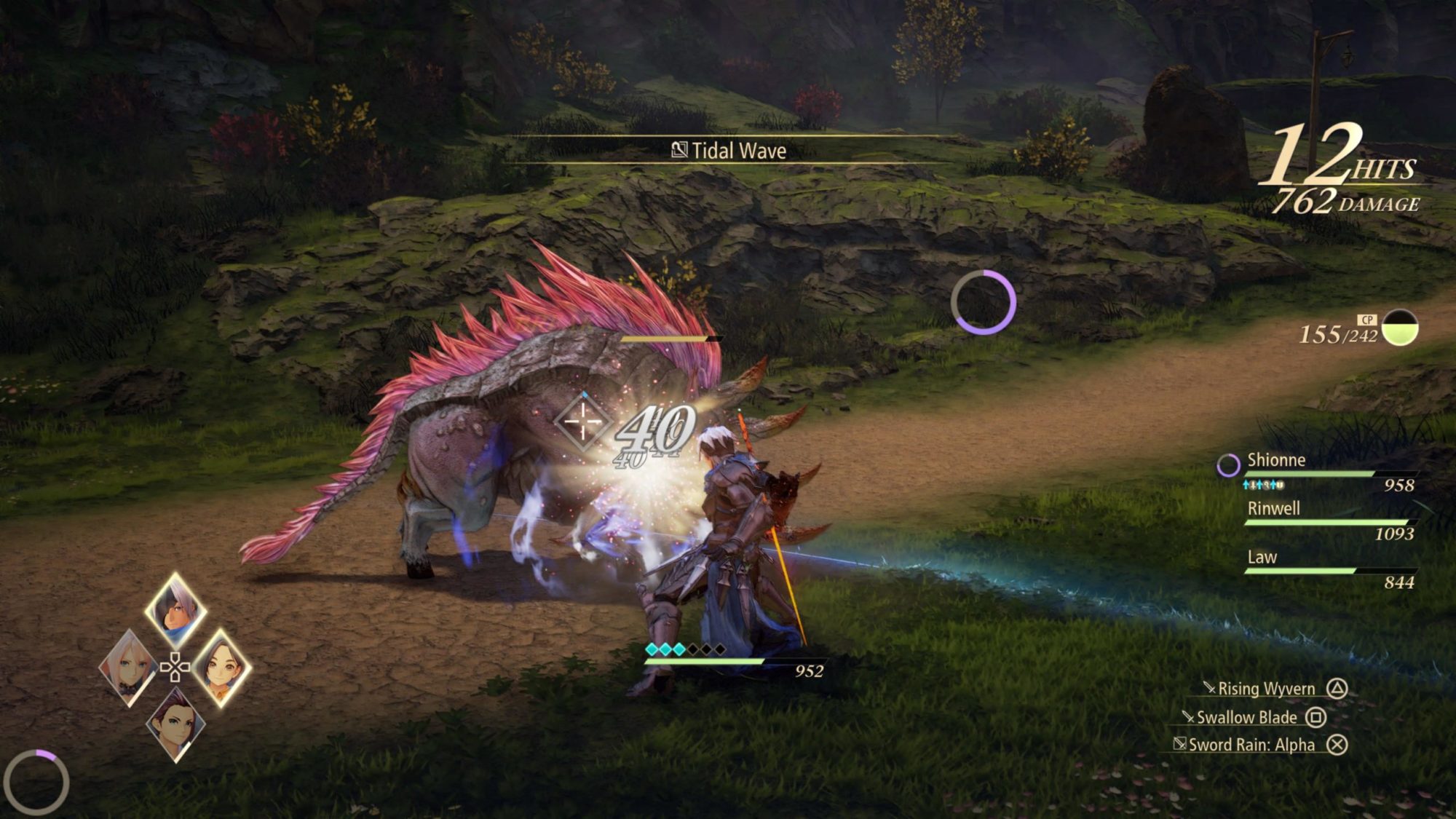
Battles, on the other hand… they’re fun, but still lacking in depth. If you’ve played the demo, you’ve already seen most of what the battle system has to offer. You have access to basic attacks and 6 artes (12 later in the game). Artes act as special moves, with a character’s AP limiting the amount of artes that can be chained in one combo. They’re also split into ground and aerial artes, with certain party members able to do increased damage against enemies in the air.
Mixing things up is boost attacks, letting you call in an ally to attack enemies, even if they’re not in your active party. Each boost strike has its own special effect — melee fighter Law can break armoured opponents, while Alphen is able to down most enemies, including bosses. They’re flashy and break up the often mindless artes spam. A system is in place to stop constant repetition of moves, though you can just loop through the same four artes to get past this. Boost strikes also have the secondary effect of increasing the controlled character’s AP, extending combos even further.
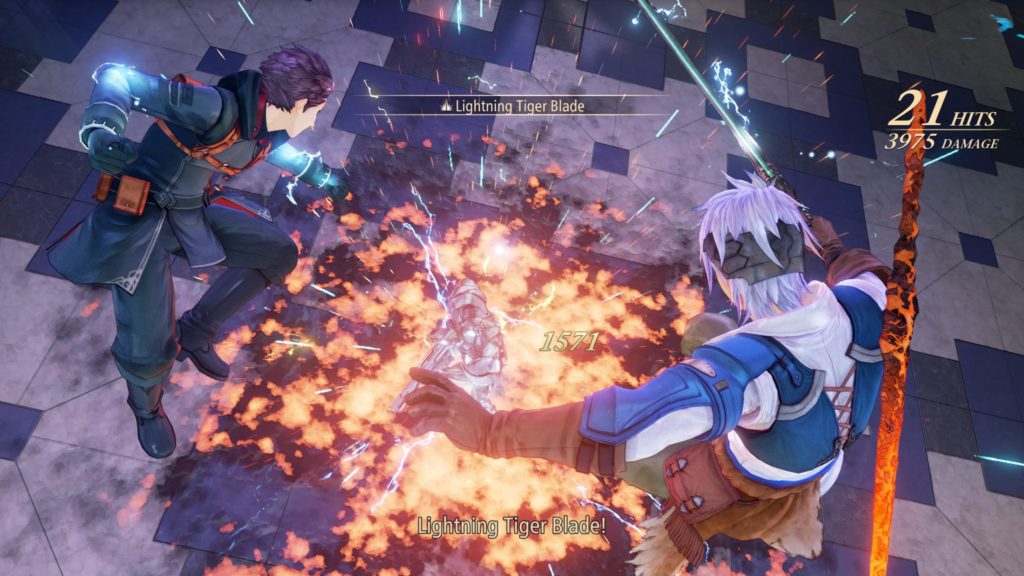
It’s fast-paced, utilising the permanent free movement of Tales of Berseria with the addition of a 360-degree dodge — said dodge can lead to bonus damage if you time it right against enemy attacks. The problem is that there’s no real skill ceiling. Each character is limited in the artes useable at one time, and combo potential for casters feels low until you unlock most of the cast time reductions.
The whole ground/aerial artes system also feels a little pointless during many important boss fights thanks to the fact that humanoid characters are often too short to hit in the air, and with them sometimes being resistant to launching, you’ll end up just stuck on the ground. This does make dodging more important — doubly so with how hard bosses hit — but doesn’t make the already simplistic combat feel any better. Don’t get me wrong, it’s still enjoyable to fight though encounters thanks to how fast paced they are, and switching between party members mid battle is fluid enough that multiple character combos are possible. I just wish that there was something else to spice things up a bit.
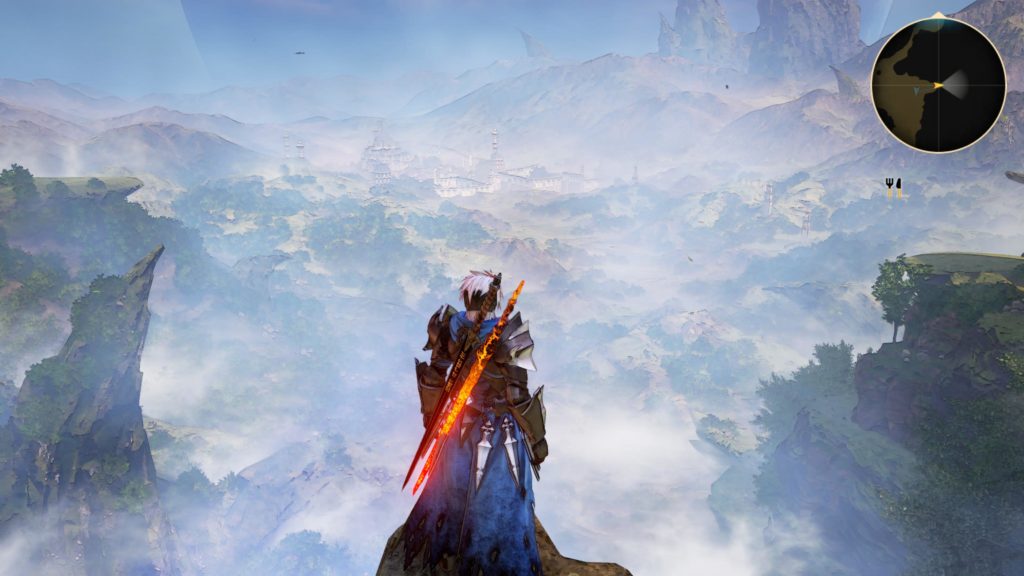
On the presentation side of things, Tales of Arise is absolutely a step up from earlier games, albeit with a more subdued colour palette. Character models are detailed, and there’s lots of foliage and other objects strewn throughout each area. It’s not going to hold up to bigger budget games made specifically for current gen systems, yet it can still look amazing at times.
The PS5 version has options for graphics and performance modes (this is also present in Tales of Arise when playing on the PS4 Pro, Xbox One X, and Xbox Series X). The former is locked to 4k, but suffers from noticeable framerate dips. Meanwhile, performance mode offers a near-flawless 60fps — I only ran into dips during certain fights with tons of effects on screen — at the cost of a lower resolution.
Switching to performance mode early on was a no-brainer for me. You get buttery smooth gameplay without having to sacrifice visuals too much. The only issue ended up being pop-in for NPCs and enemies, though the high draw distance for everything else meant that this wasn’t a big deal.

If the visuals are a marked improvement for the series, then Tales of Arise’s soundtrack is instead more of the same. I was actually kinda excited to hear the game’s full OST after enjoying some of the tracks from the demo, but the full release doesn’t have a whole lot of memorable tracks.
The battle theme from the demo is still excellent (even if it gets replaced partway through for a worse version), and many of the area and town themes work well as ambient background music. The rest, however, just feels uninspired. I’d have been interested to see how Go Shiina (composer behind the best songs in Tales of Zesteria) would have handled the games music, if he was still with Bandai Namco.
At the end of the day, Tales of Arise is an incredibly fun game. There are some things that I would have liked done differently, and the battle system is definitely simplistic, though these things likely won’t be much of an issue for most players. Honestly, any game that I can play for 50 hours in under two weeks and still enjoy is a great one in my book. I’m looking forward to seeing what Bandai Namco does with the franchise next — hopefully we wont have to wait until the PS6 for their next Tales project.
Tales of Arise launches September 10 for PS4, PS5, Xbox One, Xbox Series X|S, and PC via Steam. Thanks to Bandai Namco for providing a PS5 code for this review.
Join The Discussion
Rice Digital Discord
Rice Digital Twitter
Rice Digital Facebook
Or write us a letter for the Rice Digital Friday Letters Page by clicking here!
Disclosure: Some links in this article may be affiliate links, which means we may earn a small commission if you make a purchase after clicking on them. This is at no additional cost to you and helps support Rice Digital!
- Class of Heroes: Anniversary Edition Beginner’s Guide - April 25, 2024
- Farming sim SunnySide gets updated demo ahead of launch - April 24, 2024
- Metaphor: ReFantazio releasing October 2024, new gameplay revealed - April 24, 2024






